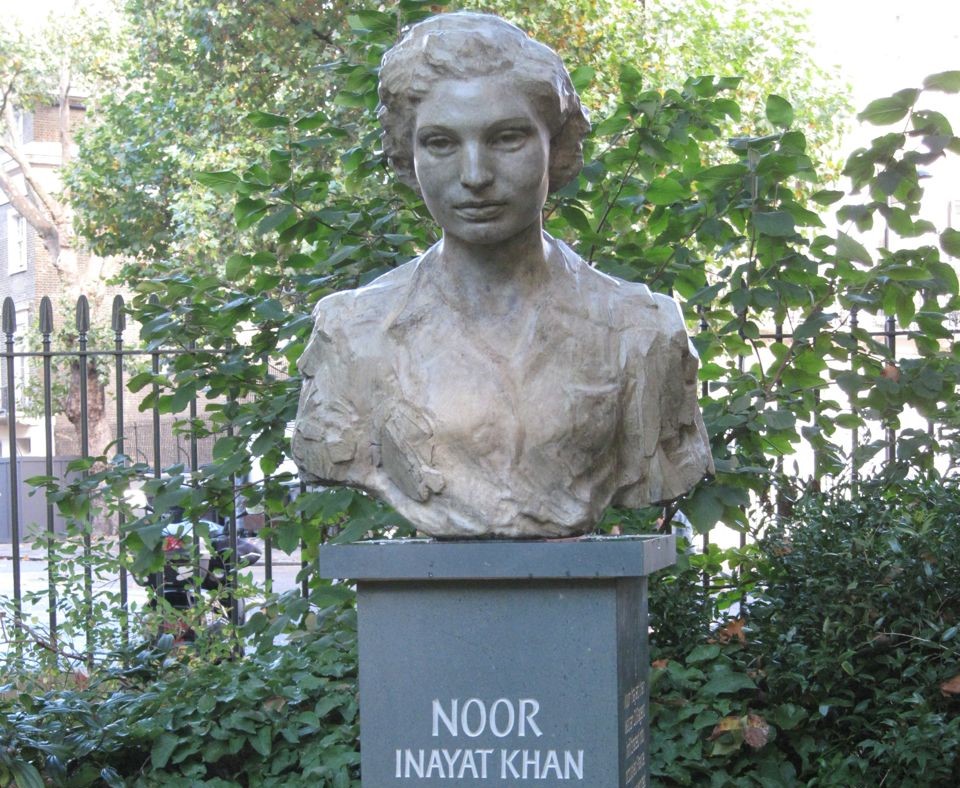Memorial bust of Noor Inayat Khan in Gordon Square Gardens, Bloomsbury, London. Photo: Henk van der Wal / CC BY-SA 3.0 DEED. Cropped Image.
Noor Inayat Khan was a remarkable woman who lived a remarkable life. She was born in Moscow on New Year’s Day 1914 to an Indian father and an American mother, both of whom were teachers of Sufism, a mystical branch of Islam that emphasizes universal love and harmony. She was a direct descendant of Tipu Sultan, the 18th-century ruler of Mysore who resisted British colonialism. He was known as the Tiger of Mysore and was a pioneer in the use of rocket artillery. She had three younger siblings: Vilayat, Hidayat, and Khair-un-Nisa.
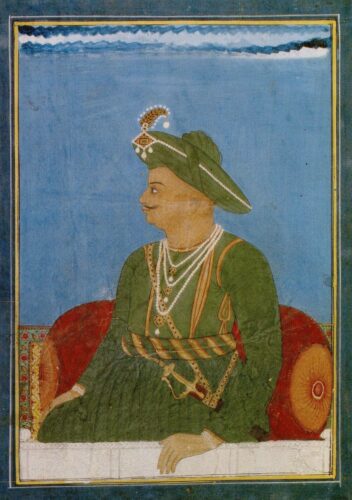
She grew up in London and Paris, where she was exposed to different cultures and religions. She was fluent in English, French, Urdu, and Persian. She studied music, psychology, and literature at the Sorbonne and the Paris Conservatory. She was a talented writer and composer, who published children’s stories and poems in English and French under the pen name Nora Baker. She also contributed to French radio broadcasts for children.
When World War II broke out, Noor and her family fled to England, where she decided to join the fight against Nazi tyranny. She enlisted in the Women’s Auxiliary Air Force (WAAF) in November 1940 as an Aircraftwoman 2nd Class. She trained as a wireless operator and learned Morse code. In late 1942, she was recruited by the Special Operations Executive (SOE), a secret wartime organization that conducted espionage, sabotage, and resistance activities in Axis occupied Europe and Asia. She was eager to serve in France, where she had many friends and relatives.
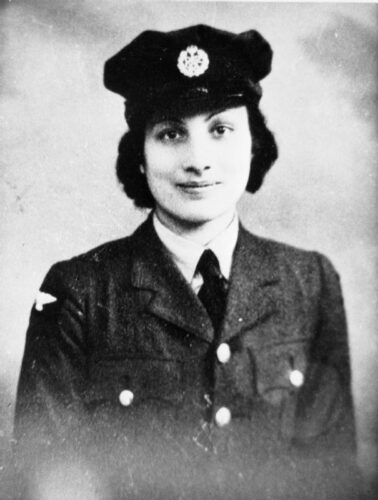
She was the first female wireless operator to be sent to France by the SOE, under the codename Madeleine. She landed by Lysander aircraft near Angers on June 16, 1943. She had a crucial role in maintaining radio contact between the London headquarters and the French resistance networks. She used a portable radio set that she carried in a suitcase or a wooden box. She transmitted messages in Morse code at pre-arranged times and frequencies.

Noor faced many dangers and difficulties in her mission. She had to change her location frequently to avoid detection by the Gestapo, who were hunting down wireless operators with vans equipped with radio direction finders. She had to transmit messages quickly and accurately, often under stressful conditions. She had to cope with the betrayal of some of her fellow agents, who revealed her identity to the Nazis for money or under torture. She had to endure loneliness and fear, knowing that she could be arrested at any moment.
In October 1943, Noor was betrayed by a Frenchwoman named Renée Garry, who was the sister of one of her contacts. She was arrested by the Gestapo at her apartment in Paris. She had unwisely kept copies of all her secret signals and contacts in her notebooks, which fell into the hands of the Nazis. They were able to use her radio to trick London into sending new agents — straight into the hands of the waiting Gestapo.
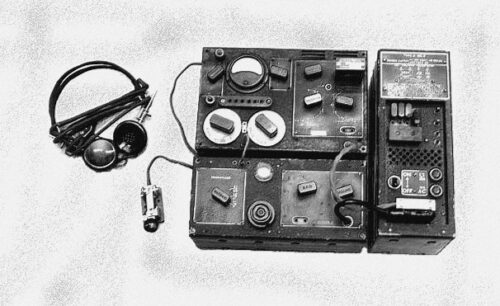
Noor escaped from prison on November 25, 1943, along with two other SOE agents, but they were recaptured a few hours later. She was interrogated by SS officer Hans Kieffer, who tried to break her spirit and extract information from her. But Noor refused to reveal any information to her captors, even under severe pressure. She lied, resisted, and gave nothing away. She attempted to escape several more times from different prisons.
In November 1943, she was sent to Pforzheim prison in Germany where she was kept in chains and in solitary confinement for ten months. She was classified as “highly dangerous” by the Nazis and treated harshly. In September 1944, Noor and three other female SOE agents were transferred to Dachau concentration camp where on 13 September they were executed by a firing squad. She remained loyal, courageous, and defiant until the end. Noor’s last word was “Liberté” (freedom).
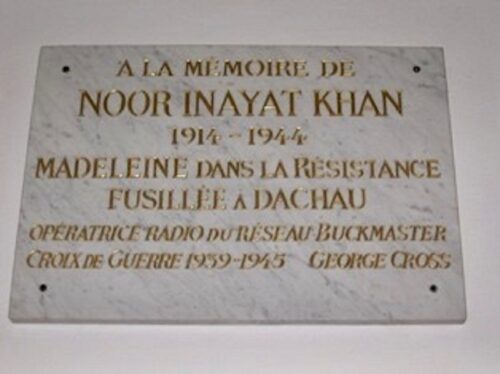
The other three agents were Yolande Beekman, Eliane Plewman, and Madeleine Damerment. Beekman was born in Paris in 1911 to a Swiss father and an English mother. She worked as an import-export clerk in Leicester before joining the WAAF and then the SOE. She operated as a wireless operator for the Musician circuit under the codename Mariette until she was arrested by the Gestapo at Saint-Quentin in January 1944.
Plewman was born in Marseille in 1917 to an English father and a Spanish mother. She worked as a press officer for the British embassies in Madrid and Lisbon before joining the SOE. She served as a courier for the Monk circuit under the codename Gaby until she was arrested by the Gestapo at Montpellier in May 1944.
Damerment was born in Lille in 1917 to a French father and a Belgian mother. She worked as a shop assistant in Paris before joining the SOE. She served as a courier for the Bricklayer circuit under the codename Martine until she was arrested by the Gestapo at Paris in August 1944.

All four women showed remarkable courage and resilience in the face of torture, imprisonment, and death. They were posthumously awarded the Croix de Guerre by France and the King’s Commendation for Brave Conduct by Britain.
Noor Inayat Khan was also appointed Member of the Most Excellent Order of the British Empire (MBE) and awarded the George Cross (GC) for bravery in Britain, as well as a Mentioned in Dispatches. She was also honored with a memorial bust in London’s Gordon Square Gardens, a blue plaque from English Heritage at her former address of Taviton Street in Bloomsbury, London. and a plaque in Paris’ Place des États-Unis. She is remembered as a spy princess, a noble Indian, and a Muslim heroine.
*The views and opinions expressed on this website are solely those of the original authors and contributors. These views and opinions do not necessarily represent those of Spotter Up Magazine, the administrative staff, and/or any/all contributors to this site.

